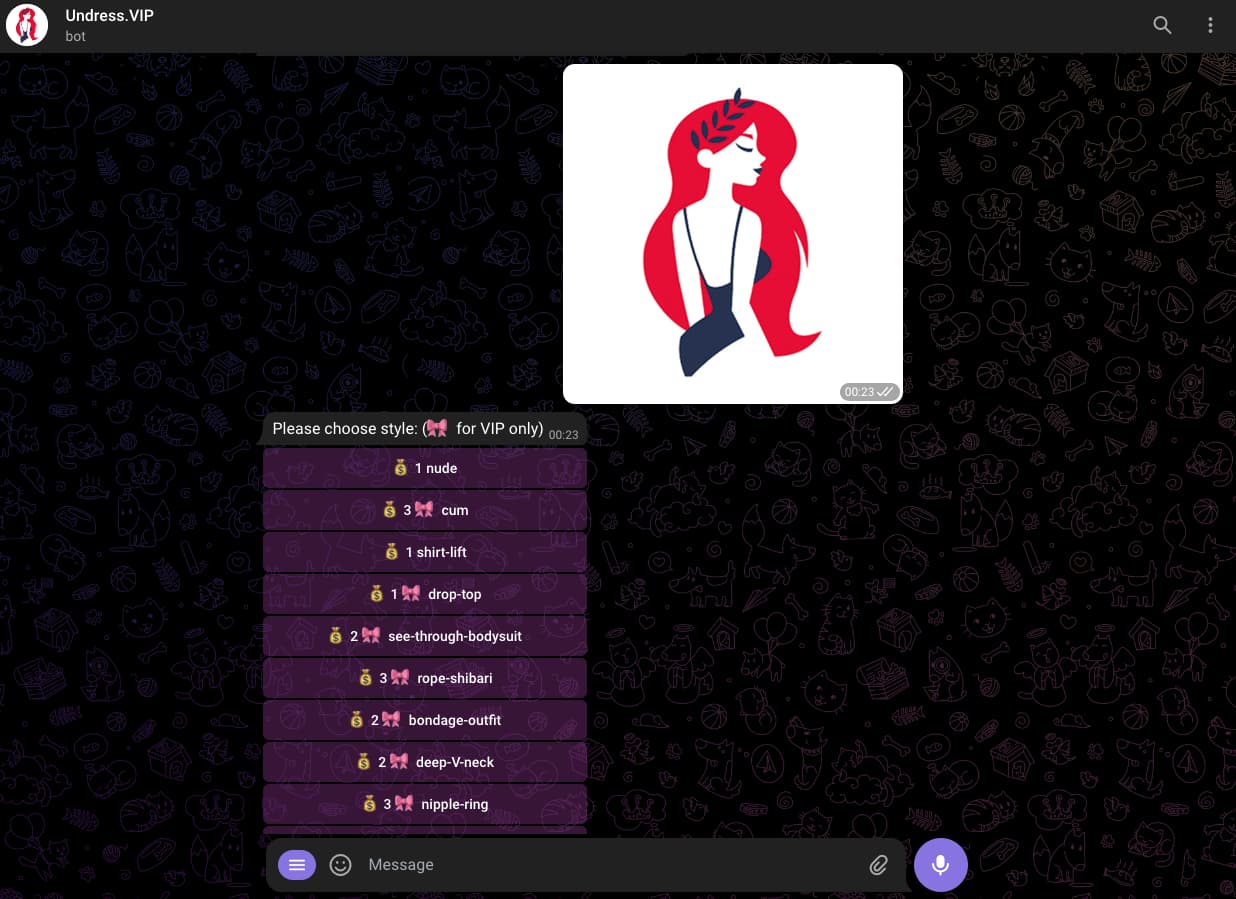Is it possible to digitally disrobe an image with a few clicks, blurring the lines between reality and artificial creation? The rise of AI-powered "undressing" tools has thrust this question into the forefront of digital discourse, offering a glimpse into a future where image manipulation reaches unprecedented levels of sophistication.
The advent of artificial intelligence has revolutionized numerous sectors, and the realm of image manipulation is no exception. Tools that can realistically remove clothing from images, often referred to as "undress AI" or "nudify AI," have emerged, leveraging complex algorithms and machine learning models to achieve their results. Platforms like Undress AI, Unclothy, and Undresser AI are at the forefront of this technological advancement. These tools, powered by sophisticated AI, analyze images and digitally generate versions where clothing appears to be removed. The process, while seemingly simple, involves intricate steps of image recognition, context analysis, and realistic rendering to produce convincing outcomes.
The allure of these tools lies in their potential applications across various domains. Designers can visualize garments on different body types without physical prototypes, artists can modify images for creative projects, and users can explore the capabilities of these AI-driven platforms for personal entertainment. However, this technological leap forward also brings forth serious ethical considerations. The potential for misuse, particularly the non-consensual creation and distribution of nude images, casts a long shadow over these advancements. The invasion of privacy and the risks of exploitation are concerns that cannot be ignored.
Platforms like Undressher, Muke's Undress AI, and Slazzer 3.0 offer their services, often touting speed and ease of use. The process typically involves uploading an image, specifying the type of clothing to be removed, and allowing the AI to perform the transformation. While the technology promises instant results, the ethical implications demand careful consideration. Whether it's to simply change the color of model's clothing, adding a fun twist to the images or to fully undress any person online, users should always be aware of the ethical boundaries. The ease with which these tools can be used raises serious questions about digital privacy and consent.
The evolution of this technology has made it simple to remove clothes from photos. Platforms like Undress.app and others allow users to quickly and easily remove clothing from images using advanced AI. The results of these tools are quite astounding. Digital images are able to produce nudes in seconds. However, it is important to highlight and acknowledge that these tools and technologies can be misused. In the wrong hands, these tools could potentially be used in illegal and harmful acts.
The emergence of AI tools capable of removing clothing from images has sparked discussions about the ethical implications of such technology. Services such as Undress VIP and others claiming to offer free AI services, highlight the ease of access and potential for misuse. The technology, which utilizes advanced AI models, allows users to upload images and automatically detect and remove clothing, generating altered images. However, this capability raises concerns about the invasion of privacy and the potential for non-consensual image creation and distribution. The need for careful consideration of these ethical aspects is paramount.
The rapid advancement of AI has given rise to various tools that can remove clothes from photos. Explore the power of nudify AI. Try deepfake ai tools for free now! There are AI nudifiers available online that can be used for free. The ethical considerations associated with these tools are paramount, the potential for misuse and privacy violations are significant.
The integration of AI in image modification also offers creative opportunities. Designers can visualize how garments fit and drape on different body types without physical prototypes. Artists can modify images for artistic projects, ensuring a seamless and realistic finish. These uses showcase how AI can be employed for creative and professional endeavors. However, it is essential to use these tools responsibly and to be aware of their limitations and risks.
AI tools like Clothoff provide advanced features for photo undressing. Users can upload images, adjust settings, and get precise results instantly. The technology utilizes advanced AI models to detect and remove clothing automatically, generating altered images. These tools typically offer a user-friendly interface, making it easy to remove clothes from photos. However, the potential for misuse of this technology raises concerns about digital privacy.
AI "undressing" technology, while offering innovative capabilities, is surrounded by ethical considerations. The potential for misuse, particularly regarding non-consensual image creation and distribution, necessitates careful examination. The rapid evolution of such technologies demands a responsible approach, prioritizing digital privacy and ethical boundaries.
Tools designed for photo undressing leverage advanced AI models to identify and remove clothing. These services often allow users to upload images and generate altered versions instantly. AI is used to identify and remove the clothes from the photo. The whole process takes a few seconds. This can enhance images for artistic projects, ensuring a seamless and realistic finish. Tools like Muke's Undress AI upload a photo to remove clothes. However, the ethical implications of such tools are significant.
When using AI-powered image modification tools, it is imperative to adhere to ethical guidelines. Respect for privacy, the pursuit of consent, and a commitment to responsible usage are crucial. Users should be aware of the potential for misuse and prioritize ethical considerations in their interactions with this technology. By embracing ethical practices, the opportunities presented by AI can be harnessed in a responsible and constructive manner.
The rise of AI "undressing" tools presents a complex interplay of technological innovation and ethical considerations. While offering creative and professional possibilities, these platforms raise fundamental questions about digital privacy, consent, and the responsible use of technology. As AI continues to evolve, it is essential to navigate these challenges thoughtfully, fostering a future where innovation and ethics can coexist harmoniously. The capacity to remove clothes from photos presents a unique set of challenges and ethical considerations that must be addressed to ensure responsible use.
The development of AI clothes removers like "Undress AI" and "Unclothy" has opened up new possibilities in image manipulation. These tools use advanced AI models to automatically detect and remove clothing from photos. This technology has multiple applications for designers, artists, and other professionals who require the ability to alter or modify images. However, the ethical concerns surrounding this technology are significant, and careful consideration is required to ensure responsible use and prevent the exploitation of others. Slazzer 3.0 is a free undress ai tool that is available online.
The emergence of AI-driven tools that can modify images raises questions about digital ethics and privacy. These tools use sophisticated techniques to alter photographs accurately. This creates a need for responsible use and increased awareness of potential misuses, highlighting the necessity of promoting ethical practices.
The functionality of AI undressing platforms is built on cutting-edge AI technology. These platforms support multiple file formats and provide rapid clothing removal from uploaded photos. By utilizing AI, tools such as those offered by Undressher and others offer a smooth and efficient method of image editing. The potential for this technology is significant, but ethical considerations are paramount.
The ethical implications of tools that can remove clothing from photos are substantial, and demand a vigilant approach. As technology advances, the necessity for promoting digital safety and responsible conduct becomes even more crucial. The potential for misuse must be acknowledged, and ethical principles must guide the development and application of these tools.
Muke's undress ai is the best undress app. Using muke ai undress upload a photo to remove clothes, you can make anyone deepnude. With the ease with which these platforms and tools can be used, it is imperative to highlight and acknowledge that these tools and technologies can be misused.
The process typically involves uploading an image, specifying the type of clothing to be removed, and allowing the AI to perform the transformation. While the technology promises instant results, the ethical implications demand careful consideration. Whether it's to simply change the color of model's clothing, adding a fun twist to the images or to fully undress any person online, users should always be aware of the ethical boundaries. The ease with which these tools can be used raises serious questions about digital privacy and consent.
The use of AI for image manipulation offers a range of applications, from fashion design to artistic expression. Designers can visualize how garments fit on different body types without physical prototypes. Artists can modify images for creative projects, creating seamless and realistic results. However, it is important to use these tools responsibly and to be aware of their limitations and risks. The tools are becoming increasingly sophisticated.


